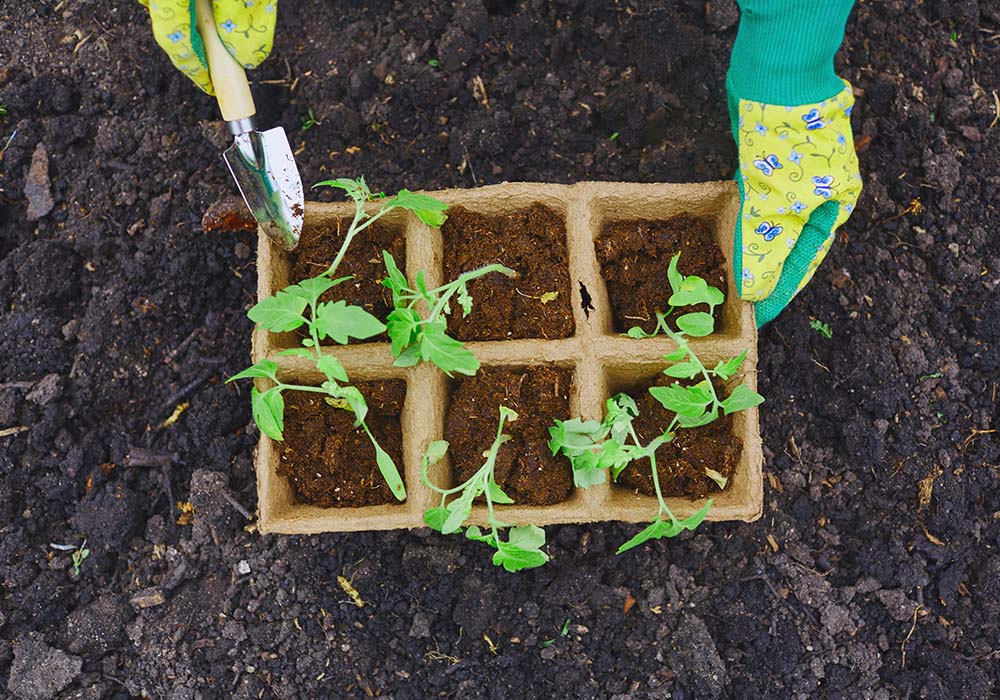
Is calcium a good fertiliser? What does it provide for your soil and is it worth adding to your lawn-care routine? And what is the best source of calcium for plants? What types of fertiliser provide a good source of calcium? And finally, how do you add calcium to your soil? When is the best time to apply it?
In this article, we will answer all of those questions as we explore calcium as a fertiliser in great depth. Let’s take a closer look:
Is calcium a good fertiliser for my garden?
Calcium is good fertiliser for your garden, though it isn’t the most important thing. You see, calcium is a secondary macronutrient for soil. It isn’t required in the same type of quantities as phosphorous, potassium, and nitrogen; however, calcium is still a crucial aspect of plant growth and can make them far less susceptible to pests and diseases, which is always a bonus.
Calcium fertilizer is good in moderation
If your garden gets too much calcium, then your soil will have a high pH (far too alkaline). This will affect the absorption of the important macronutrients found in other fertilisers.
So, how do you determine whether or not your soil needs calcium? Well, you can try with a professional soil test. This is different from the regular type of pH test that you can do from home. Instead, a professional soil analysis looks at both the calcium levels and the overall pH of your soil. Thus, carrying out this type of test can tell you exactly what you need.
You should also bear in mind that calcium moves from the root tips and upwards through the plant via water. As such, you’ll need to water your plants sufficiently in order for the calcium to do its job.

What is the best source of calcium for plants?
What is the best source of calcium for plants? Let’s take a look:
Gypsum: Gypsum (calcium sulphate) is without question, one of the fastest acting calcium supplements available. It also has a low CEC which does not lower or raise your pH levels, so it’s ideal for a quick boost in calcium without throwing off the overall balance.
Foliar Spray: Foliar spray (calcium acetate, calcium nitrate, and calcium chloride), is the quickest and easiest remedy for plants that have a calcium deficiency. Whilst calcium is typically absorbed through the roots, plants have an easier time of absorbing nutrients more effectively through their leaves. As such, a spray on the leaves can help boost calcium levels appropriately.
Lime: Lime (calcium carbonate and other mined limestone) can be added to your soil for a huge calcium booster. Not only will this race your soils pH, but it can make it less acidic as well.
Dolomite Lime: Dolomite lime (calcium carbonate) is great for adding a decent amount of calcium to your soil. Dolomitic lime has magnesium carbonate present in it as well and thus is good for raising the pH of soils that are low on magnesium.
If, however, your soil tests are coming back as saying that magnesium levels are already too high, then you should opt for a different calcium product so as to maintain good balance.
Hardwood Ashes: Hardwood ashes can provide a good amount of calcium to your soil, though they will raise your pH as well. If, however, you want to raise your soil’s pH, then you may be better off with lime, as hardwood ash is half as effective in that regard.
Soft Rock: Soft work (calcium oxide), also known as rock phosphate, releases calcium in your soil at a slower rate than lime, though is less soluble. This will moderately raise the pH of your soil, so again, be mindful of that before choosing this option.
Egg Shells: Egg shells decompose too slowly to be as effective as most other calcium fertilisers, however, they are an attractive addition to compost.
Bone Meal: Bone meal is high in phosphate with a slower release than lime. This is ideal for soil that needs a moderate rise in pH. Bone meal is especially great for those growing bulbs and root crops.

How do I add calcium to my soil?
The easiest way to add calcium to your soil, is by adding lime to the soil in autumn.
Imagine your soil is a storage warehouse for plant nutrients, such as calcium and magnesium. The CEC (cation exchange capacity), refers to the relative ability that your soil has for absorbing and holding certain nutrients in the form of cations (or positively charged ions).
Your CEC is also linked to the overall pH of your soil. Soils that tend to have a higher pH present, typically contain higher levels of available calcium.
Again, running a professional soil test is a good way of determining the state of your soil and its current CEC.
If your soil has a higher CEC, then that nods toward their being more organic matter in your soil (e.g., clay). This is a good thing as these types of substances are better at holding water and nutrients, such as calcium. A low CEC on the other hand, indicates that the soil is sandier, which is much likely to lack the nutrients required to keep the plants healthy.
By increasing your CEC and adjusting your pH levels, you will ultimately increase the availability of calcium in your lawn. This, coupled with the various calcium fertilisers mention above can help you achieve the desired balance.
Conclusion
If you are looking for some calcium fertiliser, you will easily find plenty of quality products from places like Bunnings; who would typically source their calcium based fertilisers from an international fertilizer supplier like Tkkfer. Depending on how much fertiliser you need, you can always go straight to the source.

